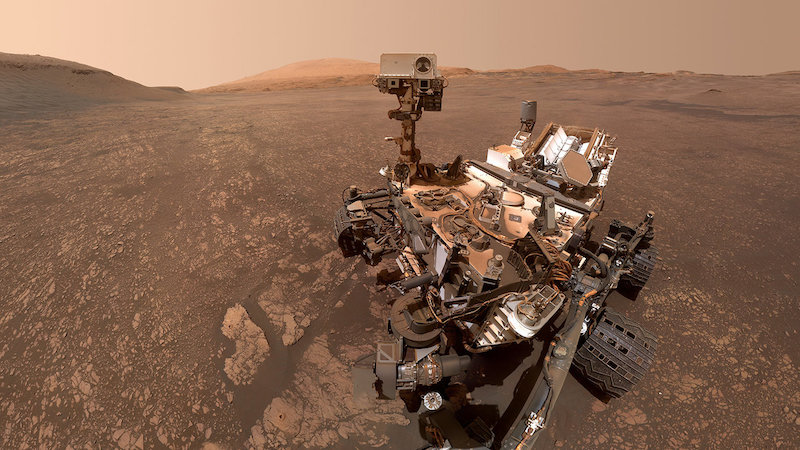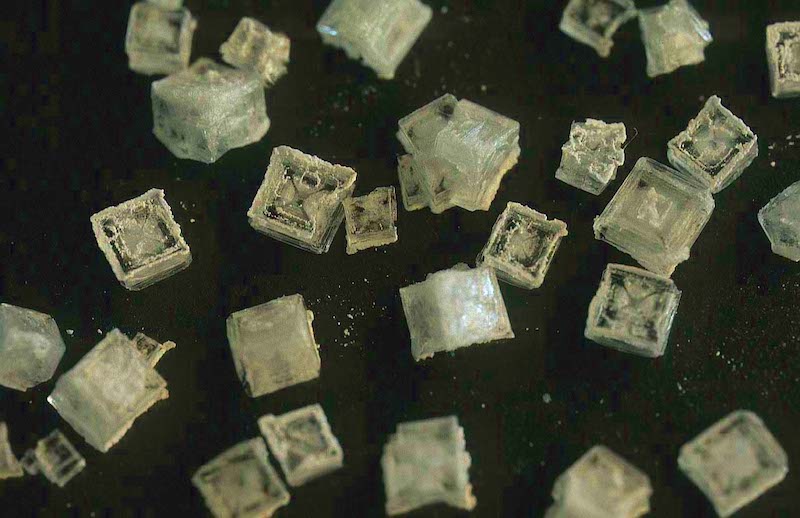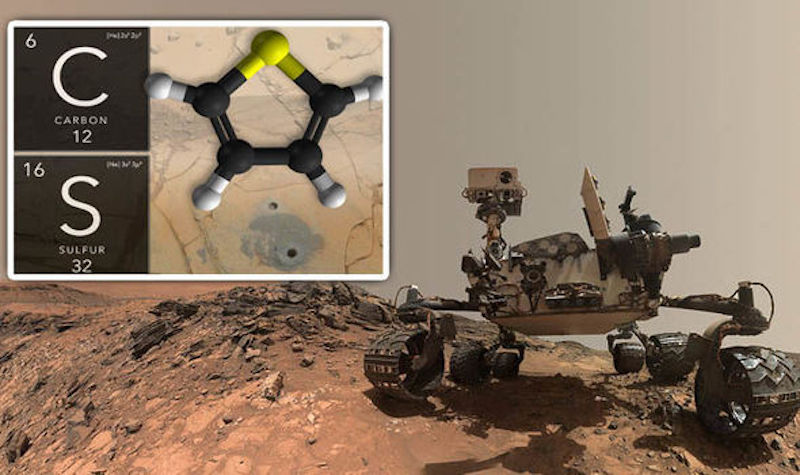
Salts are common on Mars. They’re preserved in rocks and soil, left over from when the planet was wetter than today. Now, scientists at NASA have found evidence that organic salts also likely exist on Mars today. The researchers announced their findings in late May 2021. The results are intriguing, because such salts, and other organics, might be created by geological processes. Or they might be remnants of ancient microbial life.
Organic salts, by the way, are salts that contain an organic ion. They’re chemical remnants of organic compounds, that is, compounds containing carbon. All known life is based on organic compounds.
The researchers published their new peer-reviewed findings in the Journal of Geophysical Research: Planets on March 30, 2021.
A piece of Mars’ organic puzzle
NASA’s Curiosity rover has found organics before, but organic salts would provide important new clues about the planet’s habitability. James Lewis, lead author of the new paper, stated:
If we determine that there are organic salts concentrated anywhere on Mars, we’ll want to investigate those regions further, and ideally drill deeper below the surface where organic matter could be better preserved.
Finding and analyzing organic samples is an important part of the search for evidence of life on Mars. If life ever existed, it should leave behind chemical fingerprints in the form of organic compounds. The researchers are trying to piece together, as such, the tiny fragments of organics they find, like a jigsaw puzzle. Lewis said:
We’re trying to unravel billions of years of organic chemistry, and in that organic record there could be the ultimate prize: evidence that life once existed on the red planet.
Finding organic salts on Mars is hard
Mars’ surface is bombarded by ultraviolet radiation from the sun, which breaks down organic compounds. This makes the search for organics, including organic salts, challenging. But it can be done, as Curiosity has shown. The rover discovered a variety of organic compounds in 2018 that all contained carbon. Carbon is essential for all life as we know it. The organics found by the rover have been trapped in rocks, and better protected from the hostile surface conditions.


There are also issues with how the rover’s instruments analyze samples for organics. Curiosity’s Sample Analysis at Mars (SAM), an onboard laboratory, has found indirect evidence for organic salts. But obtaining direct evidence is more difficult. Why? SAM looks for organics by heating the samples up to 1,800 degrees Fahrenheit (1,000 degrees Celsius) or more and measuring the gases that are released. The problem is that organic salts only produce simple gases that could also originate from other sources in the samples. According to Lewis:
When heating Martian samples, there are many interactions that can happen between minerals and organic matter that could make it more difficult to draw conclusions from our experiments, so the work we’re doing is trying to pick apart those interactions so that scientists doing analyses on Mars can use this information.

There may be a solution, however. Another instrument, the Chemistry and Mineralogy instrument (CheMin), is capable of detecting organic salts, if in large enough quantities. So far though, it hasn’t. Scientists previously said that there should be organic salts on Mars, however. Those simpler molecules are more easily preserved than larger, more complex organic molecules.
Replicating Martian rocks in the lab
So how did the researchers determine that organic salts could be detected by Curiosity?
In the lab, Lewis mixed organic salts with an inert silica powder. This mixing simulates the environment inside the Martian rocks. Perchlorates, another type of salt containing chlorine and oxygen, were also sometimes added. It has long been thought that they could interfere with the detection of organics on Mars. This includes the controversial biology experiment findings from the Viking 1 and 2 landers in the early 1980s.
The researchers observed two interesting things. First, the perchlorates did in fact interfere in the lab tests. However, the test samples containing perchlorates were also a better match for the SAM results from Curiosity. This implies that the samples analyzed by Curiosity did in fact contain organic salts.
The search continues
The results might not be proof of organic salts, yet. But they are a strong hint that organic salts exist on Mars.
Curiosity is now gradually climbing higher up the lower slopes of Mount Sharp. The rover will continue to search for evidence of the elusive salts. Until now, it has been exploring the former lakebed in Gale Crater. This region is characterized by ancient clays and sediments.
Now, though, Curiosity is moving higher up into the part of Mount Sharp dominated by sulfates. What will it find?
Other clues to life?
In 2015, Curiosity also detected nitrogen in samples it was analyzing. Nitrogen is one of the building blocks of larger molecules like DNA and RNA that encode genetic instructions and proteins.
This, along with the carbon organics, whiffs of methane and oxygen and the possible organic salts are all tantalizing clues that might point to ancient or even current life on Mars.
As has been true for decades, confirmation of that possibility will require yet more study.
Bottom line: NASA’s Curiosity rover has found hints of organic salts on Mars. If confirmed, they could provide important clues about previous habitability and the potential for ancient microbial life.











